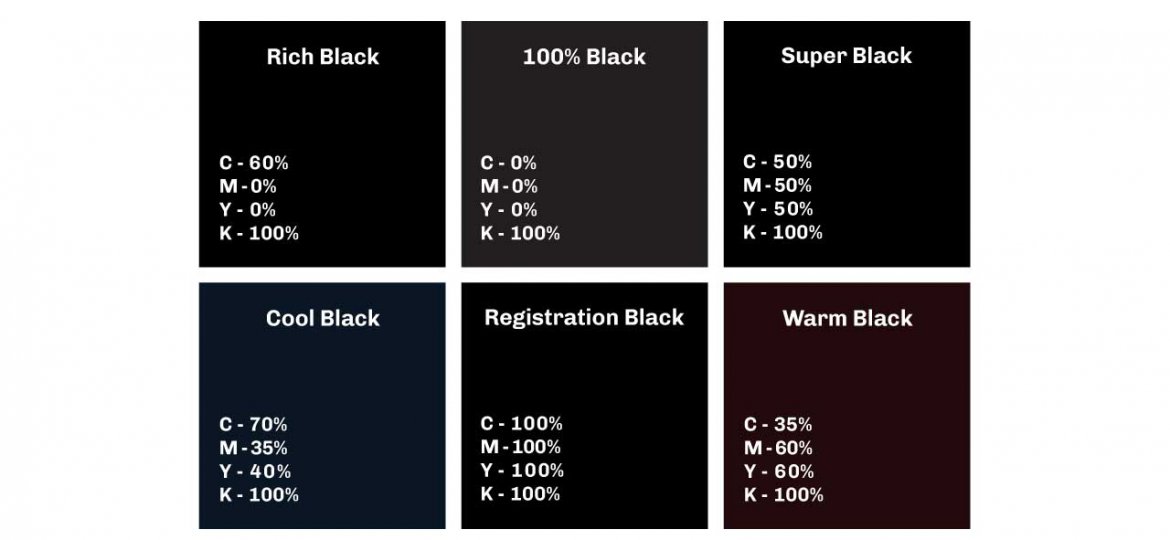
When we think of color, we often think of the many shades of primary colors. Take blue for example…it can vary between colors such as baby blue, aqua, turquoise, teal, royal blue, or navy blue. Many people may assume that the one exception to these color variations is black. After all, we think of black as being absolute darkness, and expect it to appear uniformly when printed on a document as well. However, black that is used in full-color (process) printing is transparent, like all process inks, and cannot cover ink or paper as opaquely as you may prefer. There are many different recommendations to help achieve a rich black color in print.
Although using an opaque black ink may seem like a simple solution, it would cause adverse reactions to other color or high-resolution images that contain black ink. Instead, the best option is to add various “enriched” or rich process blacks in your art file for print. Rich black uses a combination of black ink and other process colors to achieve a darker black color.
Types of Rich Black
- Rich Black
Rich black combines process black with one other process ink – traditionally 100% black and 60% cyan – which causes the black to appear “blacker” because the second ink color increases its density. Use rich black whenever the edges of a black object are fully exposed, or when a black object straddles other image information. And because it combines multiple color plates in the printing process, it’s only appropriate for objects that are at least 1/4-inch thick. - Registration Black
Registration black uses 100% coverage of all four process colors: cyan, magenta, yellow, and black (CMYK).
- 100% Black
Pure black, or 100% black, includes only black ink and no other ink colors. The black ink may not have the deep black color or solid opacity you are seeking in your project. - Super Black
By combining three process colors – 50% cyan, 50% magenta, and 50% yellow – you can create the deepest, most satisfying process black you can reproduce on-press. Use super black only when all the object edges are within other colors, or when they bleed off the edge of the page. - Cool Black
Cool black is a blend of all process colors – 70% cyan, 35% magenta, 40% yellow, and 100% black – to create as black that casts a cool hue.
- Warm Black
Warm black combines all process colors – 35% cyan, 60% magenta, 60% yellow, and 100% black – to create a black that absorbs more light and casts a warm hue.
Because a computer monitor does not accurately depict colors for print, always be sure to review colors on a printed proof before your project goes to press.

